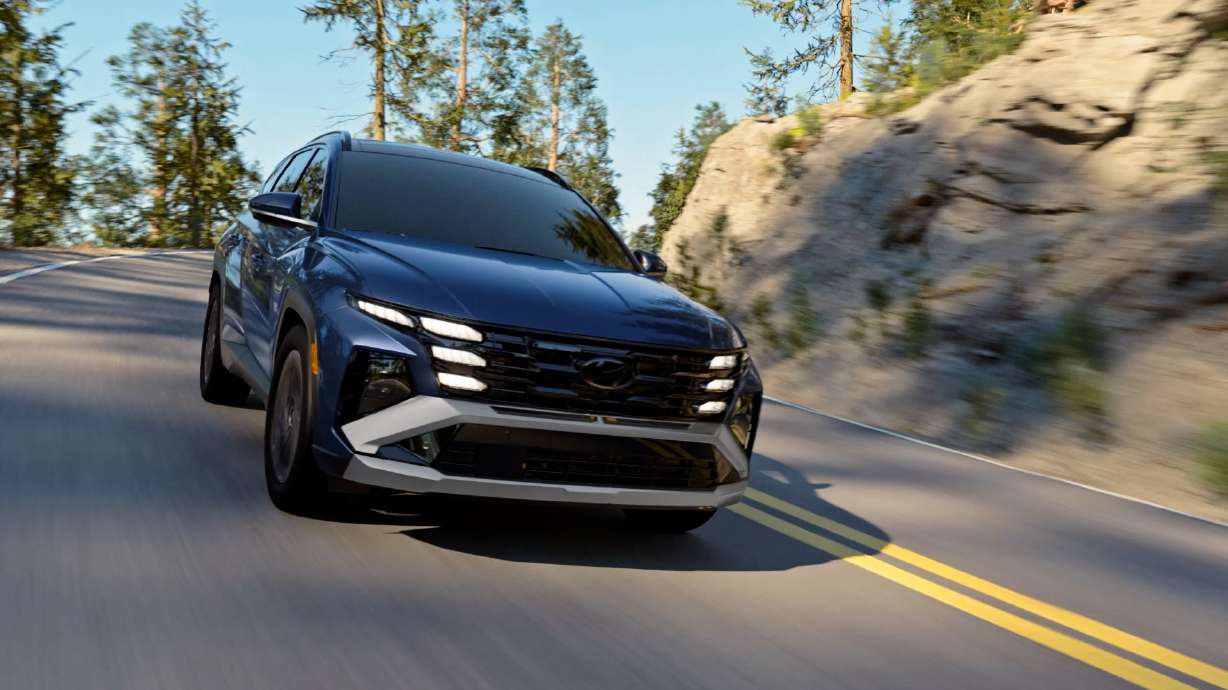Estimated read time: 5-6 minutes
It's almost impossible to discuss the future of the automotive industry without addressing the electric vehicle market. New EV models are arriving on showroom floors daily, and some manufacturers have pledged to make their lineups fully electric within less than 20 years.
While changes are occurring, many still prefer the range and reliability of internal combustion and hybrid vehicles. It's for this reason that few companies have been able to capture the preferences of today's drivers better than Hyundai.
"Hyundai does a great job at not only providing their customers with variety, but staying on the cutting-edge with everything they produce," said John Burgett, general manager at Young Hyundai in Ogden. "A lot of these hybrid and internal combustion Hyundai's carry the great features typically found in EVs without making drivers decide to change."
From SUVs like the Tucson to sedans like the Sonata, Hyundai offers over 10 hybrids and internal combustion vehicles across their lineup.
Here's what makes them noteworthy.
Performance
All of Hyundai's hybrids across their family of vehicles are capable of greater fuel efficiency than their internal combustion counterparts. A Santa Fe hybrid, for example, achieves 36 combined mpg while a model that relies on gas from the same lineup averages between 22-24 mpg.
That said, most internal combustion models produce more horsepower. Using the same example of the Santa Fe, a gas model can deliver 277 horsepower at 5800 rpm while an electric-assisted version produces 178 horsepower at 5500 rpm.
This trade-off is common across the industry. That said, there are exceptions within Hyundai's lineup — specifically for the Tucson.

Known as "the modern adventure hybrid SUV," the Hyundai Tucson hybrid uses both its internal combustion and electric engine to yield greater speed and range. Able to produce 40 more horsepower, the hybrid version went from 0-60 mph within 7.7 seconds in a test conducted by Edmunds — 1.1 seconds faster than the internal combustion model performed with Car and Driver.
Individuals will also notice the features of each powertrain when testing the two Tucsons. Though each has a Shiftronic drive train system, the internal combustion model uses an eight-speed automatic transmission while the hybrid uses a six-speed.
Mounted steering-wheel paddle shifters are available to owners of the hybrid model as well.
"When hybrids initially entered showrooms, they had a reputation for lacking power. That's far from the case today," Burgett said. "These hybrid Tucsons are a great example of that. They have a lot to offer their drivers."
According to Hyundai, the internal combustion Tucson achieves 25 mpg in the city and 33 mpg on the highway when in front-wheel drive. Those numbers drop to 24 mpg in the city and 33 mpg on the highway when in all-wheel drive. The hybrid version — which only has all-wheel drive — achieves a combined 35 mpg.
For the Tucson specifically, Hyundai also offers a plug-in hybrid option. Increasing the output of the electric motor from 47.7 kW in the standard hybrid to 72 kW, the model boasts an impressive 268 horsepower while achieving up to 35 mpg.
"What makes the plug-in model so intriguing isn't just the added power and range, but the all-electric option as well," Burgett said. "If you have a short commute, you can rely solely on the battery and save some money on gas. It's a way to get the best benefits of both driving an electric and internal combustion vehicle."
Technology and amenities
Hyundai strives to make each of their vehicles as modern as possible. Since 2012, they've equipped a majority of their models with Bluelink compatibility — allowing drivers to access vehicle features from a smart phone. Today, owners can make remote start, climate control and door lock decisions from an app, as well as add geofencing and curfew settings for young drivers.

While these are great features, one attribute that differentiates Bluelink from similar services has been the introduction of Hyundai Pay. Accessed from a vehicle's touch screen, individuals driving any of the manufacturer's 2025 vehicles can pay for parking before they arrive at a destination. Hyundai states that the feature will soon allow users to purchase fuel and charging in advance as well.
"I think a lot of people associate the latest tech with electric vehicles," Burgett said. "What I appreciate about Hyundai is that they work to add new features like Hyundai Pay to all of their models. While we may not all be ready for an EV, I think most people are ready for this next wave of tech."
Included in that next wave are driver assistance services. Using SmartSense technology, today's Hyundai vehicles feature Highway Driving Assist — which helps maintain an appropriate speed and distance. When activated, the vehicle will use lane assist and smart cruise control to take care of most driving needs as long as a driver's hands are on the steering wheel.
Tips for test driving
With a variety of vehicles to look through, some may have a hard time making a decision in a dealership like Young Hyundai. For those individuals, Burgett recommends making a list of priorities.
"These vehicles all have amazing things to offer, and it's hard to make a wrong decision. I'd consider really looking through what your current needs are, and what you're wanting for the future. Our sales staff also works hard to make sure that they can help drivers find vehicles that align with their taste," Burgett said.
Visit the link to browse through the Weber County dealership's Hyundai hybrid and internal combustion vehicles.








